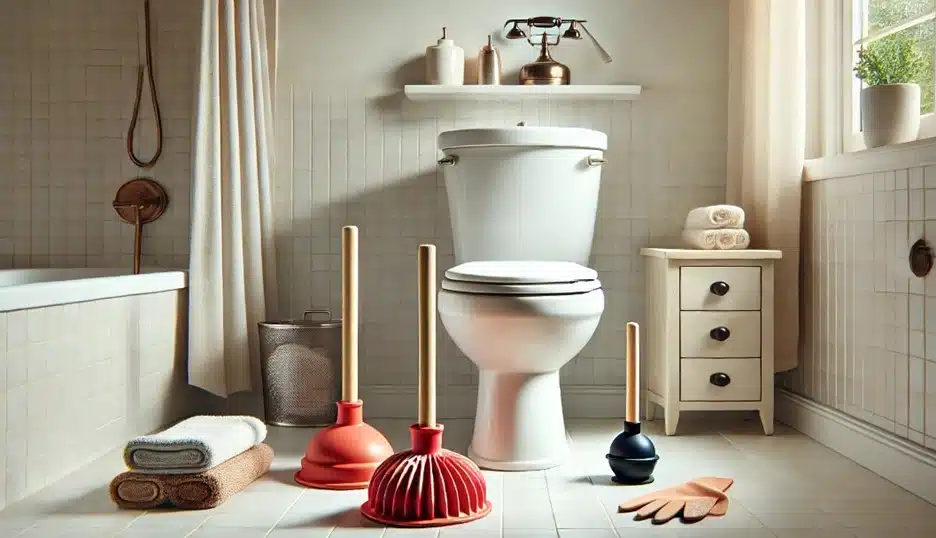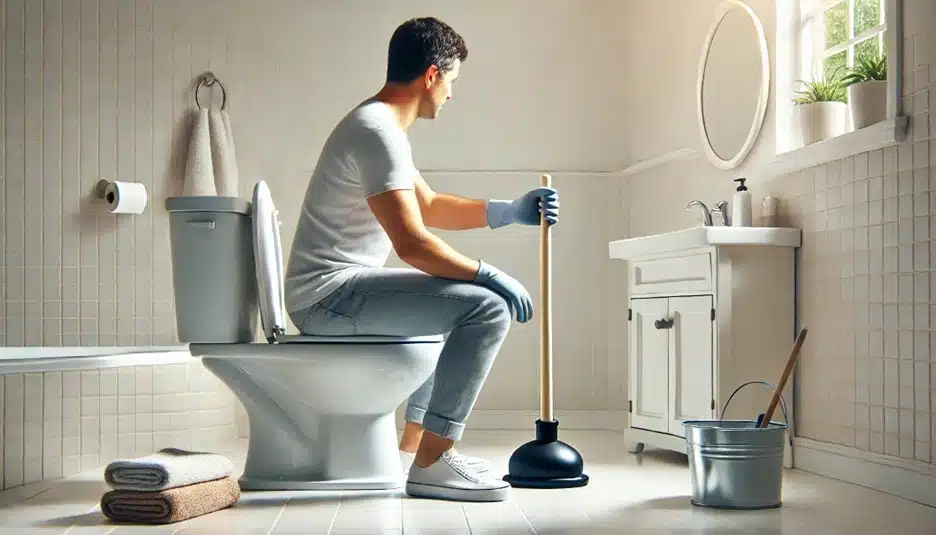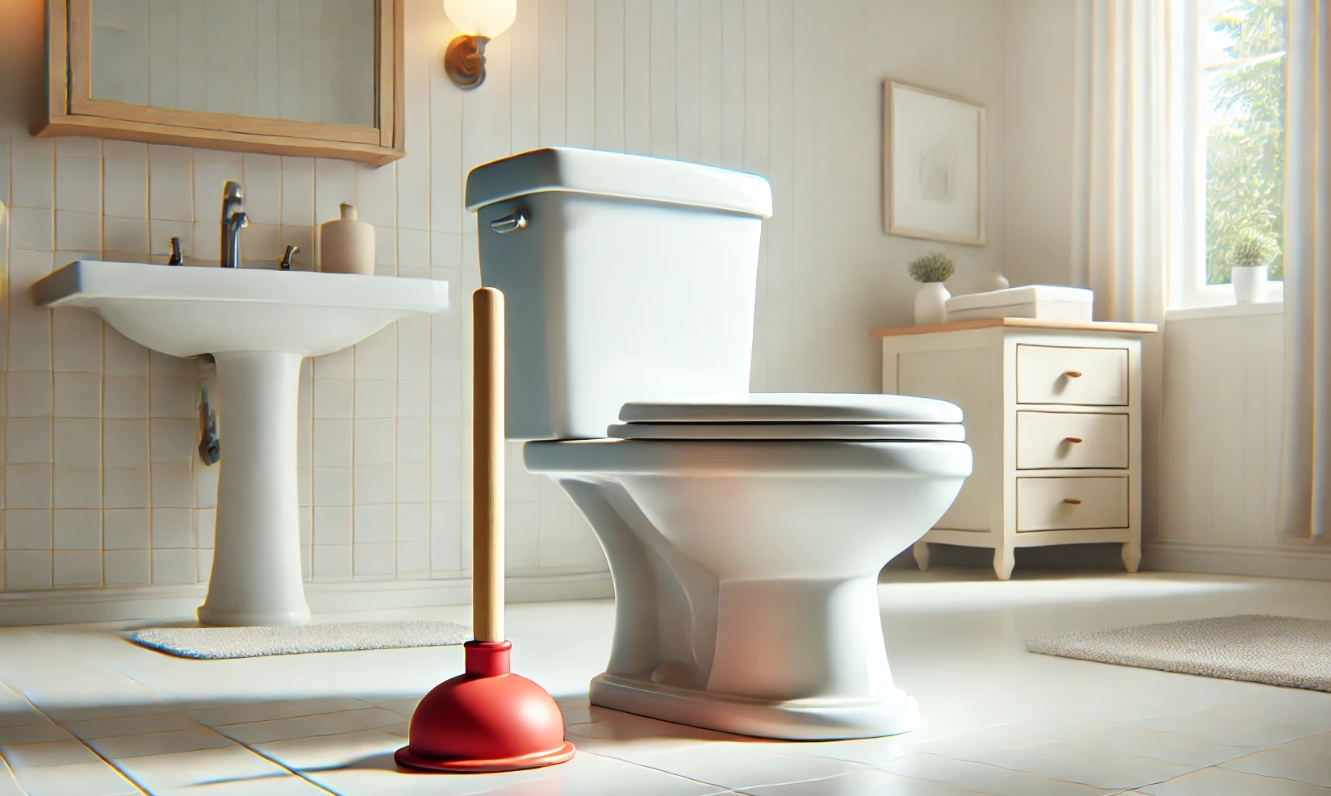A clogged toilet is a household emergency that can strike at the most inconvenient times. Knowing how to correctly use a plunger is an essential skill that can save you time, money, and embarrassment. This guide will walk you through the process of choosing the right plunger, using it effectively, and troubleshooting common issues when dealing with a stubborn clog.
Not all plungers are created equal. Understanding the different types will help you choose the most effective tool for the job:
For toilet clogs, always opt for either a flange or accordion plunger. The flange plunger’s extra rubber flap fits snugly into the toilet drain, creating a better seal. The accordion plunger can generate more force but may require some practice to use effectively. Avoid using a simple cup plunger on toilets, as it won’t create an adequate seal to generate the necessary suction.

Before you start plunging, gather these essentials:
Assess the water level in the bowl. If it’s too full, remove some water to avoid splashing. If it’s too low, add water until it’s about halfway up the bowl. This ensures enough water to cover the plunger’s cup and create an effective seal.

When faced with a clogged toilet, many people make common mistakes that can hinder their plunging efforts or even make the situation worse. One frequent error is plunging too aggressively right from the start. This overzealous approach can cause messy splashback, potentially creating an unsanitary situation in your bathroom. It’s crucial to begin with gentle plunges to expel air from the plunger and establish a proper seal before increasing the intensity.
Another mistake to avoid is breaking the seal while plunging. Maintaining a consistent seal between the plunger and the toilet bowl is essential for creating effective suction. If you lift the plunger too high between plunges, you’ll break this seal and significantly reduce the plunger’s effectiveness. This can prolong the unclogging process and lead to frustration.
Using the wrong type of plunger is a common oversight that can greatly impact your success in clearing a toilet clog. Many people reach for a standard cup plunger, which is designed for flat surfaces like sinks and bathtubs. However, these plungers are ill-suited for the curved shape of a toilet bowl. Instead, opt for a flange plunger or an accordion plunger, both of which are specifically designed to create a better seal in toilets and provide more powerful suction.
Lastly, not having enough water in the bowl is a mistake that can prevent proper suction. If the water level is too low, the plunger won’t be able to create an effective seal or generate the necessary force to dislodge the clog. Before plunging, ensure that there’s enough water in the bowl to cover the plunger’s cup entirely. If needed, add water manually to achieve the right level for optimal plunging performance.
By avoiding these common mistakes, you’ll greatly improve your chances of successfully unclogging your toilet with a plunger, saving time and potentially avoiding the need for professional assistance.
If plunging alone doesn’t solve the problem, try these alternatives:
Preventing toilet clogs is far easier than dealing with them once they occur. Regular cleaning plays a crucial role in maintaining a clog-free toilet. It’s essential to remember that toilets are designed to handle only toilet paper and human waste. Flushing other items, such as wipes, feminine hygiene products, or excessive amounts of toilet paper, can lead to serious blockages. These items don’t break down easily in water and can accumulate in your pipes, causing stubborn clogs.
Ensure that all household members, including children, understand what can and cannot be flushed down the toilet. For those considering a bathroom upgrade, a dual-flush toilet can be an excellent investment in clog prevention. These modern toilets offer two flushing options: a lower-volume flush for liquid waste and a higher-volume flush for solid waste. By using only the necessary amount of water for each type of waste, dual-flush toilets not only conserve water but also reduce the likelihood of clogs caused by insufficient flushing power.
By implementing these maintenance tips and fostering good toilet habits among all household members, you can significantly reduce the frequency of clogs and keep your toilet functioning smoothly for years to come.
Mastering the art of plunging a toilet is a valuable skill that can save you from many plumbing headaches. By choosing the right plunger, using proper technique, and following the tips in this guide, you’ll be well-equipped to handle most toilet clogs quickly and effectively. Remember, prevention is key – maintaining good toilet habits and regular cleaning can significantly reduce the frequency of clogs in your home.
I bring over 9 years of dedicated plumbing experience to the table. As a seasoned professional in the plumbing industry, I've tackled a wide range of projects, from residential repairs to large-scale commercial installations.

